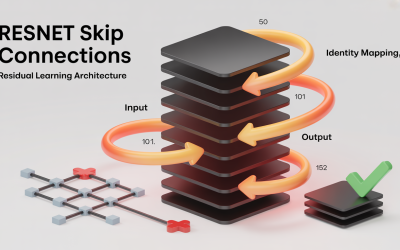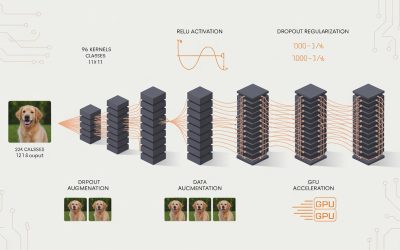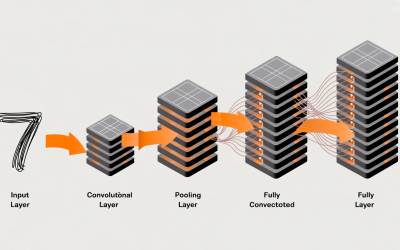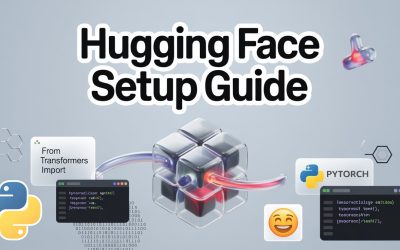Modern artificial intelligence has revolutionized how we approach computer vision tasks. Rather than training neural networks from scratch every time, transfer learning computer vision enables developers to build upon existing knowledge, dramatically reducing training...
ResNet: Solving Deep Network Training Challenges
Deep learning has transformed artificial intelligence, but training very deep networks remained problematic until ResNet emerged. Developed by Microsoft Research in 2015, ResNet introduced a groundbreaking solution through ResNet skip connections that fundamentally...
VGGNet: Simplicity and Depth in Network Design
Deep learning has revolutionized computer vision, and VGGNet stands as one of the most influential architectures in this transformation. Developed by the Visual Geometry Group at Oxford University, VGGNet Architecture Design introduced a groundbreaking approach that...
AlexNet Revolution: Deep Learning Breakthrough in ImageNet
In 2012, a groundbreaking moment transformed the field of artificial intelligence. AlexNet deep learning achieved unprecedented success in the ImageNet Large Scale Visual Recognition Challenge, reducing the error rate by a remarkable 10.8 percentage points. This...
LeNet Architecture: Pioneer of Convolutional Networks
The LeNet CNN architecture revolutionized computer vision in the 1990s. Developed by Yann LeCun and his colleagues at AT&T Bell Labs, this groundbreaking model laid the foundation for modern deep learning. Moreover, it demonstrated that neural networks could...
Convolutional Neural Networks: Architecture and Core Concepts
Deep learning has revolutionized computer vision, and at its heart lies the Convolutional Neural Network (CNN). These powerful architectures have transformed how machines perceive visual information, enabling breakthrough applications in image recognition, medical...
Image Fundamentals: Digital Representation and Processing Basics
In today's digital world, images play a crucial role in communication, entertainment, and technology. Understanding digital image representation is essential for anyone working with computer vision, graphic design, or image processing. Pixels and Image Arrays:...
What is LlamaIndex? Data Framework for LLM Applications
LlamaIndex stands as a revolutionary data framework specifically designed to bridge the gap between large language models and external data sources. Moreover, as businesses increasingly embrace AI-powered solutions, LlamaIndex has become an indispensable tool for...
Getting Started with Hugging Face Transformers: A Complete Setup Guide
The world of artificial intelligence has been revolutionized by transformer models. Consequently, developers and researchers need robust tools to harness these powerful architectures. This comprehensive Hugging Face setup guide will walk you through everything needed...










